Mudcracks
| Why do geologists care about mudcracks? Picture yourself working through layer after layer of shales and fine sandstones (or, althernately, thinly layered limestones) looking for clues as to how they formed. They are probably marine in origin, but some clues suggest that they could have formed near land. If you find lots of mudcracks, you know that your sediments experienced many alternations between wet and bone-dry. A great place to get this is in a tidal flat enviornment.
Or, lets say you have lots of extensively cross-bedded sandstones. Marine? non-marine? Mudcracks in this case suggest non-marine--sand dunes often have little mudcracked areas in between them.
These are two examples where mudcracks, added to other sedimentary observations, help constrain a possible environment of deposition. |
|
Mudcracks generally form polygons with various numbers of roughly straight sides.
Mudcracks are preserved when a flood washes in sediment that fills the cracks and buries the muddy bottom before the mud can swell and destory its cracks.
This photo is typical of the Race Track, a dry lake bed in Death Valley, CA.
|
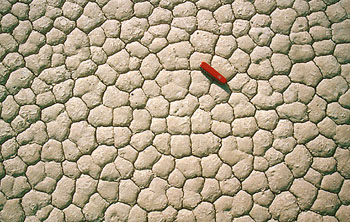
|
|
These larger mudcracks form in muds that accumulate between large sand dunes during rare rain storms. These cracks form both straight and curving lines.
Stovepipe Wells, Death Valley, CA
|
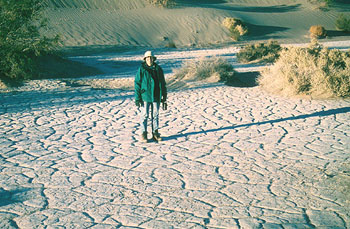
|
|
These cracks, also near Stovepipe Wells, Death Valley, form huge geometric shapes on the desert floor. If these were fossilized, it would be hard to find a rock exposure large enough to make these cracks obvious!
|
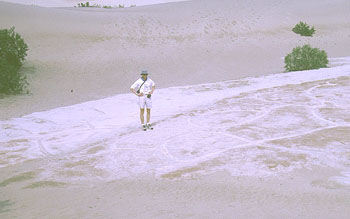
|
|
Mudcracks are commonly preserved as a color contrast between the crack fill and the cracked mud.
Photo by Norris W. Jones
|
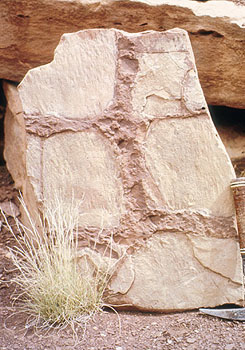
|
|
These mudcracks have preserved much of their original topography, which is fairly unusual.
Mudcracks are often drawn as 5 or 6-sided objects, but the shapes here are mostly 3- and 4-sided objects. Look for polygons!
|
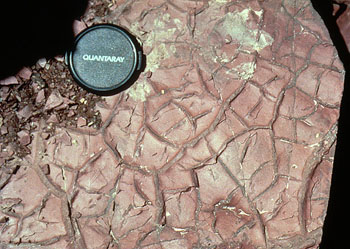
|
|

![]()




